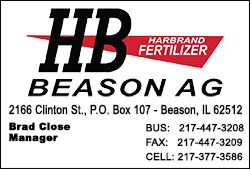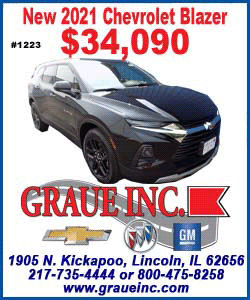Generic drugmakers Teva and Sandoz make major push to biosimilars
 Send a link to a friend
Send a link to a friend
 [November 22, 2022]
By Natalie Grover and Steven Scheer [November 22, 2022]
By Natalie Grover and Steven Scheer
(Reuters) - Generic drug makers Teva Pharmaceutical Industries and
Sandoz say they are planning a significant ramp-up in production of
biosimilars – copies of high-priced drugs used to treat illnesses such
as rheumatoid arthritis and cancer – aiming to increase their share of
an expanding market.
More than 55 brand-name blockbuster biologic drugs, each with peak
annual sales above $1 billion, are due to come off patent by the end of
the decade, according to industry estimates.
Executives from Teva and Sandoz said they are targeting top-selling
biologics such as Humira, AbbVie Inc’s top-selling arthritis drug, which
came off-patent in Europe and is due to come off-patent in the U.S. next
year. But both companies face commercial and regulatory challenges,
especially in the U.S., where biosimilars have not resulted in
dramatically lower prices for consumers.
Biologics are complex molecules cultivated inside living cells, making
it impossible to manufacture exact copies, as is the case with
conventional pharmaceuticals made from chemical compounds.
Use of brand-name biologics typically account for an outsize proportion
of drug spending in wealthier countries.

One of the biggest makers of generic drugs, Israeli-based Teva said it
aims eventually to secure a 10% global market share of biosimilars. The
company has been grappling with a heavy debt load since a 2016
acquisition and lawsuits arising from the U.S. opioid epidemic.
Teva currently has three approved biosimilars and 13 in development.
“We are going full blast now,” Teva Chief Executive Kåre Schultz said in
an interview with Reuters.
He said the company was targeting “80% of what's going off-patent in the
next 10 years" including big sellers like the cancer drug Keytruda.
A division of Novartis, Sandoz is currently the second biggest player
after Pfizer Inc in the biosimilar market by gross sales globally, per
IQVIA data, cited by Sandoz. (Amgen is in third place).
Sandoz launched eight biosimilar drugs between 2017 and 2021, including
a version of Bristol-Myers’ multiple myeloma drug Revlimid.
"We now have over 15 products in development, and in the next five years
we would like to double that," chief scientific officer Claire
D’Abreu-Hayling told Reuters, adding that the biologics they intend to
target are "really obvious opportunities".
BLOCKBUSTERS COMING OFF PATENT
Novartis plans to spin off its Sandoz generics business in 2023. The
Swiss drugmaker said the unit failed to attract a serious buyer earlier
this year as it considered options for the unit’s future.
The more than 55 blockbuster biologics coming off patent protection in
the United States and Europe over the next decade account for more than
$270 billion in expected peak annual sales, according to a McKinsey
analysis.
The analysis projected the value of the global biosimilar market could
more than triple to an estimated $74 billion by 2030.

Next year could bring a test case in the U.S. market, with the
anticipated launch of at least six biosimilars for Humira, which brings
in about $15 billion to $20 billion in annual sales and is approved for
autoimmune conditions including rheumatoid arthritis, psoriasis and
Crohn’s disease.
Sandoz and Teva are both working on biosimilars for Humira.
[to top of second column]
|

The logo of Teva Pharmaceutical
Industries is seen in Tel Aviv, Israel February 19, 2019.
REUTERS/Amir Cohen
 But the crowded field raises a tough
question: Should the companies target the biggest selling biologics
such as Humira, or aim for smaller brands that will likely attract
fewer players, said Barclays pharmaceuticals analyst Emily Field.
Teva aims to ensure it is one of the first three biosimilars on the
market for any given biologic, according to Sven Dethlefs, executive
VP, North America commercial. He said the company intended to kick
off multiple biosimilar development programs but would halt
production if it could not make the top three.
While going after Humira, Sandoz is also targeting
drugs like Biogen’s multiple sclerosis medicine Tysabri, which is
used in a much smaller patient population. The company believes no
other biosimilar is being actively developed for Tysabri, said Chief
Operating Officer Pierre Bourdage.
Creating the only biosimilar in a particular market for a particular
drug could be a win, said Joshua Harris, senior VP focused on
pharmaceutical patent litigation at Burford Capital, a provider of
commercial legal finance. “That's going to be a rare situation," he
said.
A typical biosimilar costs $100 million to $300 million to develop
and between six to nine years to win approval, according to
McKinsey. About half of efforts launched across the U.S., European,
and Japanese markets fail at the earliest stages, the report found.
Generics, which can be priced as much as 80% to 90% less than
branded pills, barely cost a few million to develop.
Biosimilars are viewed as “better than traditional generics, but
nowhere near as good as branded pharma,” Field said.
Commercial prospects will also depend on the regulatory environment.
While more than 50 biosimilars have been introduced into the
European market, the United States has taken longer to set up a
regulatory pathway for biosimilars.

European regulators consider all approved biosimilars on par with
the original biologic, which has helped boost uptake. Biosimilars
have taken the majority of market share from brand-name biologics in
Europe and resulted in savings between 75% to 90% off the reference
product prices, according to a 2021 report by Duke University’s
Margolis Center for Health Policy.
In the United States, the Food and Drug Administration (FDA) has
approved 39 biosimilars and 22 products have been launched as of
October, according to an Amgen analysis. The FDA typically expects
additional trial data before designating a biosimilar as
“interchangeable” with the original biologic, which would allow it
to be automatically replaced with a biosimilar at the pharmacy
counter.
Biosimilars launched in the U.S. have only taken about 20% of the
volume share of the biologics they are based on, according to the
Duke Report, with knockoffs delivering discounts of about 30% to
40%.
Patent-focused court battles have stymied some launches of
biosimilars. Aggressive pricing strategies from branded drug
companies also helped neutralize the limited discounts initially
offered by biosimilar makers.
(Reporting by Natalie Grover in London and Steven Scheer in
Jerusalem; Editing by Michele Gershberg and Suzanne Goldenberg)
[© 2022 Thomson Reuters. All rights
reserved.] This material may not be published,
broadcast, rewritten or redistributed.
Thompson Reuters is solely responsible for this content.
 |